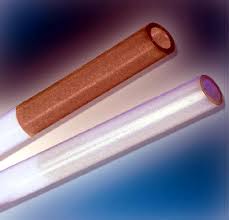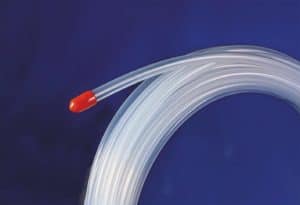FEP (fluorinated ethylene propylene) tubing is one of the most versatile materials companies around the world use for numerous projects. FEP tubes have unique physical properties that make the product an excellent choice for projects with special parameters. This includes projects where materials will be exposed to extreme temperatures, tension, or chemicals. Here are some interesting facts about FEP tubing you’ll want to keep in mind for future projects.
Affordability
FEP tubing is thought of as the original fluoropolymer. The material was first developed as a melt processable fluoropolymer alternative to PTFE. Due to this origin, FEP tubing shares similar chemical and dielectric properties with PTFE tubing. Still, the material has a few unique properties. For example, FEP tubing is excellent for projects with special parameters, such as when a material will be exposed to extreme temperatures, tension, or chemicals, and is excellent at transmitting UV rays.
FEP tubing is also nonflammable, has nonstick properties, and is resistant to UV radiation. Furthermore, FEP tubing has a somewhat higher amount of friction, a lower continuous service temperature, is clearer, and has better gas and vapor absorbency than PTFE tubing. These unique properties makes FEP tubing one of the most advanced and affordable types of tubing on the market.
Usability
FEP tubing, being extruded, is best used for projects that involve cabling and electrical insulation, particularly foamed coaxial cables. This is because the material gives off much less heat and a lower dielectric constant during insulation than other types of tubing. This helps FEP tubing handle electrical breakdowns easier. Plus, FEP tubing maintains a moderately high temperature that’s ideal for electrical projects.
Another popular use for FEP tubing is great for transporting dangerous and often explosive chemicals without splices, observing the flow of fluids. The best extruded FEP tubing is used in appliances we use daily, such as air conditioners, heaters, hair dryers, and so on. For this reason, shrink-wrapped FEP tubing manufacturers make the material in several lengths and diameters. And while clear is the most popular color of FEP tubing, you can get tubes in several different colors.
Function
Since FEP tubing can be purchased in clear and a variety of colors, you can easily organize and identify each tube you use for a project. This works well for complex cable arrangements in data centers and elsewhere where you need to keep specific cables in the appropriate position or order. FEP tubing, when extruded, can be made into covers and sensors for many instruments and measuring devices, including thermocouples, probes, thermometers, and RTDs. These covers and sensors protect these devices from being harmed in corrosive environments.
Because of the material’s chemical resistance, FEP tubing is ideal for transferring fluids and can easily be formed into special shapes. These special shapes can be made into products such as dip tubes, which fit ends of tubes, providing a secure way to transport corrosive fluids. Fluid transfer is an important application in automotive, aerospace, scientific, analytical, and medical industries. All FEP tubing is made by virgin resins and complies with all FDA regulations.
Tef-Cap Industries Inc. can tell you more about FEP tubing. Visit us online, or call our corporate center in West Chester, PA, at 610-692-2576.


